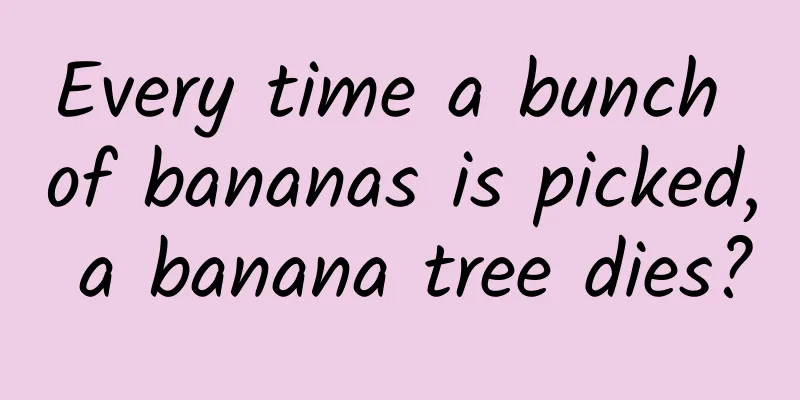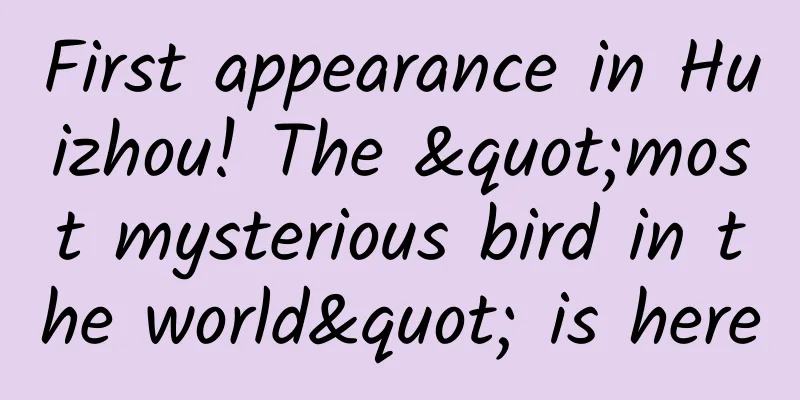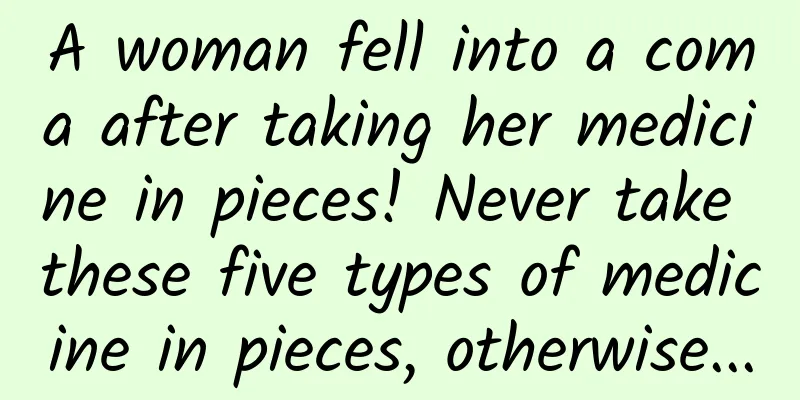Every time a bunch of bananas is picked, a banana tree dies?

|
gossip "For every bunch of bananas picked, a banana tree dies" Some time ago, a video of fruit farmers picking bananas was widely circulated on the Internet. In the video, the fruit farmers picked bananas by "cutting trees". It seems that every time they harvested a bunch of bananas, they had to cut down a "banana tree", which means that a banana tree lost its life. Rumor Analysis That is not the case. In fact, bananas have not really lost their lives. Strictly speaking, bananas are not "trees" but more like "grass". When harvesting bananas, you are actually cutting down "banana grass". What fruit farmers cut down are the "pseudostems" of bananas. The real stems of bananas are actually buried in the soil and are not destroyed. New banana pseudostems will grow from here the next year. Recently, on a variety show, a guest heard that banana trees will be cut down after the fruits are ripe, which caused surprise among many netizens. "Every time a bunch of bananas is picked, a tree loses its life" has also become a hot topic. In fact, this practice is standard in banana production, and the "banana trees" that are cut down will not be wasted, but will be turned into vegetables and packaging materials. So, what is going on? Banana "trees" aren't real trees, they're grass The bananas and plantains we eat are all plants of the genus Musa in the family Musaceae. Plants of this genus have a characteristic, that is, the above-ground parts are not real stems, but "pseudostems" formed by layers of leaf sheaths . If the pseudostems are cut open, their cross-sections look very much like Thousand-layer rolls, which is a special structure formed by layers of leaves wrapped together. The real stem of a banana is very short, much like an enlarged version of ginger. It usually does not show the ground, but stores nutrients under the ground to provide nutritional support for the development of the plant and fruit. All pseudostems grow from here, and after the old pseudostems are cut off, new pseudostems will grow from here. Copyrighted stock images, no reproduction is authorized It is worth noting that a banana pseudostem will only bloom and bear fruit once . So after the bananas are harvested, these pseudostems need to be cut off. This is a bit like the corn stalks that cannot produce new corn ears after they are harvested. It’s just that the corn stalks wither after the ears are ripe, while the banana pseudostems can grow for many years after bearing fruit, and the number of their leaves will increase. However, these additional leaves are not the products we need. If these pseudostems are not removed, they will consume the water and nutrients absorbed by the roots, thus affecting the banana yield . In fact, in the growth process of many fruits, it is necessary to balance vegetative growth and reproductive growth. This is the only way to better put the energy and nutrition produced by the plant into the fruit. The cut-down "banana tree" can also be used But there is no need to feel sad for the cut banana pseudostems, as they will shine in new scenes. In the vegetable market of Xishuangbanna, banana hearts are also sold. These milky white paper-like vegetables are actually the young leaves of banana or banana. Peel off the leaf sheaths outside the banana pseudostems, leaving the white young leaves. After a little washing, stir-fry with tomatoes or water black beans, it is a good dish to go with rice. The grown leaves can also be used in many ways, such as as environmentally friendly tablecloths or as food packaging. In Xishuangbanna, there is also a special delicacy called Bao Shao , which is to wrap the ingredients in banana leaves and roast them over fire, which not only preserves the juice and flavor of the food, but also adds a special flavor to the dishes. Banana flower is also a delicacy In addition to cutting off the pseudostems that have already borne fruit, a standard operation is performed during the production of plantains and bananas, which is bud breaking. After the young fruit grows out, the purple-red bud at the tip needs to be removed in order to allow the banana fruit to develop better. The purple-red "big petals" on the banana inflorescence are actually just bracts that wrap the flowers. The real milky white flowers are hidden inside the bracts. There are three kinds of flowers on the same inflorescence of banana, male flowers, functional female flowers, and bisexual flowers, but bisexual flowers are very rare. The banana flowers we eat are actually just the male part of the banana inflorescence, and the bananas we eat are developed from female flowers. Copyrighted stock images, no reproduction is authorized The inflorescence of banana is a typical dioecious inflorescence. When the inflorescence first opens, all flowers are functionally female. At this time, the female banana inflorescence is in a state of receiving pollen and constantly turning into small bananas. Until one day, the female flowers have completed their mission. At this time, they switch to the male working state and begin to release pollen. However, this pollination process is no longer important for cultivated bananas and plantains. These crops do not need pollination to produce sweet fruits. The male flowers that bloom later on the inflorescence become useless. Their best fate is to end up on the plate . First, remove the dry and hard bracts on the outer layer of banana flowers, leaving only the tender white banana male flowers (inucleus), chop them, rub them with salt, and then wash them before frying them into a delicious dish. If you like the taste of sour bamboo shoots, stir-fry banana flowers and sour bamboo shoots at the same time, which is the most authentic Dai cuisine. Or stewing braised pork with banana flowers is also a delicious dish. Looking in the mirror of rumors Plants have all kinds of strange structures, some of which even go against our common sense, which has led to some misunderstandings. Fortunately, these misunderstandings are generally harmless, but it is also interesting for everyone to learn more about the magical biological world. Planning and production Author: Shi Jun, science writer and PhD in botany Review|Liu Guangyu Senior Engineer, Xishuangbanna Tropical Botanical Garden, Chinese Academy of Sciences Planning丨He Tong Editor: He Tong Proofread by Xu Lailinlin The cover image and the images in this article are from the copyright library Reprinting may lead to copyright disputes |
<<: Will the little ducks who were born in the wrong place really be excluded?
Recommend
Apple iOS 15.4 / iPadOS 15.4 Developer Preview Beta 3 Released
On February 16, Apple pushed the iOS/iPadOS 15.4 ...
Silk Road, do you dare to travel?
Please follow us today Embark on a fantastic jour...
Getting Swiss watches into trouble: Did Apple pick the wrong target?
As Apple's new product launch on September 9 ...
Internet product monetization: transaction model and billing method of online advertising
This article will help you build the system outli...
How long can a mobile phone last? If these three problems occur, don't hesitate, just replace it
Everyone should understand that mobile phones can...
Comment | General artificial intelligence needs to be demystified, and we should calmly look at the popularity of "ChatGPTs"
When new tools, new modalities, and new technolog...
iOS 13: More system apps and components written in Swift
Apple released the new Swift programming language...
Can Android One allow Google to take back control of Android?
While iPhone 6 and iPhone 6S have become a hot to...
How much does it cost to develop a water drinking reminder mini program and a water drinking alarm mini program?
According to statistics, the amount of water a per...
Mantou New Media Operation Certificate Class
A millionaire trader will teach you the core skil...
Keep Competitive Product Analysis
With the continuous development of China's ec...
Case review | Cold start of a new project, clever use of the community to reach 100,000 users in 10 days
The pyramid was not built in a day, and the secre...
Lock in the bull's IPOs in Hong Kong to make steady profits
Introduction to the practical course resources fo...
Greenpeace: Research report on the circular economy potential of new energy vehicle batteries by 2030
Over the past three decades, the global productio...
How did Pinduoduo rise? An article explains the underlying logic of its traffic
The three words "Pinduoduo" are synonym...









